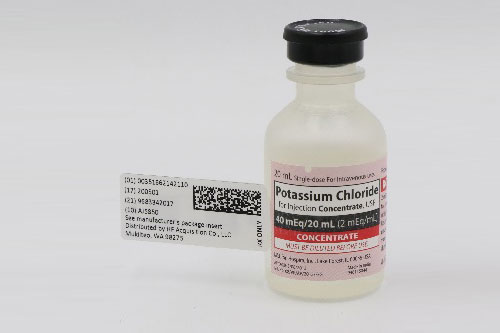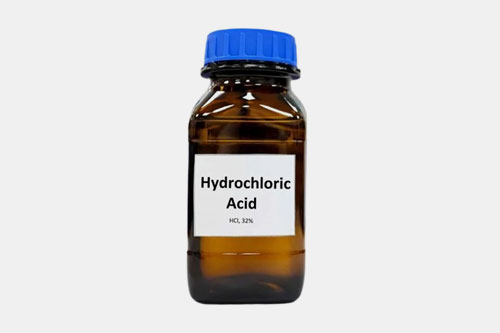Potassium Chloride For Injection: The Complete FAQ Guide In 2025
Have you ever wondered how something as simple as salt could hold the power to save a life or endanger it if used without care? The potassium chloride for injection may seems just a clear liquid but it holds a powerful ions that decide the rhythm of your heartbeat. You may look the potassium chloride in the pharmacies as a resting liquid but it holds power to decide to save the lives or to disrupt it if not carefully handled.
In the year of 2025, the potassium chloride for injection holds a most powerful tool for heartbeat protection. In this AIPAK ENGINEERING guide, you will know about how really potassium chloride work in your body? How to prepare, store and administered to the body? And many more. So, what are you waiting for, let’s begin!
1.What is potassium chloride for injection?
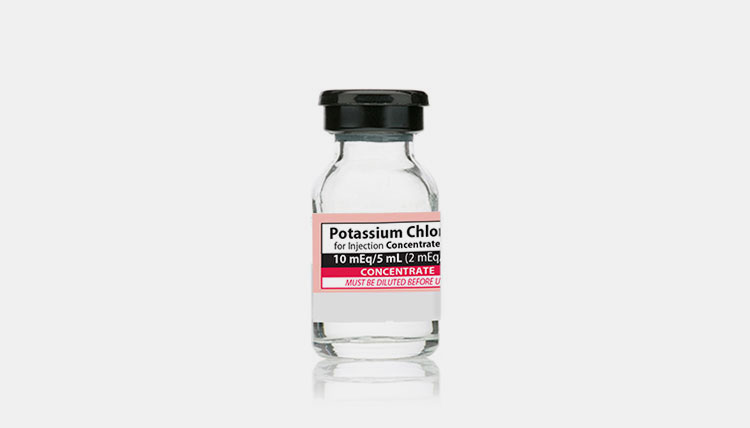
Potassium chloride for injection-Picture courtesy: pfizerhospitalus.com
Potassium chloride for injection is a solution that is given to the patient having low potassium in their body. The potassium ion is essential electrolyte for the various body functions such as functioning in heart, muscles, kidney and nerves.
2.How does potassium chloride for injection work in the body?
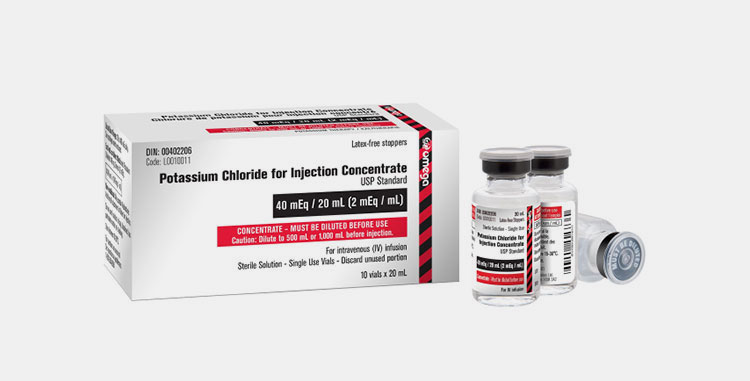
Potassium chloride for injection-Picture courtesy: cbmedical.ca
Potassium chloride for injection plays a vital role in the elevation of potassium ion in your blood. The potassium ion is very important for the normal cell functioning, muscles and nerves. The detail description of how it works in the body is given below:
| Functions | Description |
| Restores potassium levels ( correct hypokalemia) | The potassium ions are present in your body cells and blood. When the body suffers from hypokalemia or low potassium level, then the normal functions may disturbed. But when you inject the potassium ions into your body, then the potassium ion (K+) concentration restores quickly. |
| Supports nerve and muscle function | The electrical signals in nerves and muscles contraction is caused by the potassium. If deficiency occur, then the muscle weakness and cramps occur. To allow the proper signaling in the nerves and contraction of the muscles, the potassium chloride injection is important that normalize the concentration of potassium ions. |
| Maintains normal heart rhythm | Do you know the heart rhythm relies on the concentration of potassium? If the potassium ion concentration is normal, the heart beat becomes steadily. By injecting the potassium chloride into the bloodstream, the potassium ions becomes restored and hence, heart beat becomes steadily and strongly. |
| Balance body fluids and acid-base status | The balance of fluid outside and inside of the cell is very important and this can be done by the potassium. It also helps in maintaining the blood PH normal. |
3.What are the medical conditions that require the use of potassium chloride for injection?
Have you ever wondered what if the body internal batteries like heart beating and muscle movement becomes fade? In such critical conditions, doctors recommend to inject the potassium chloride electrolyte in to your body. By injecting such electrolyte, this recharge your body essential system. Here are some conditions that require potassium chloride for injection.
Hypokalemia ( low potassium levels):
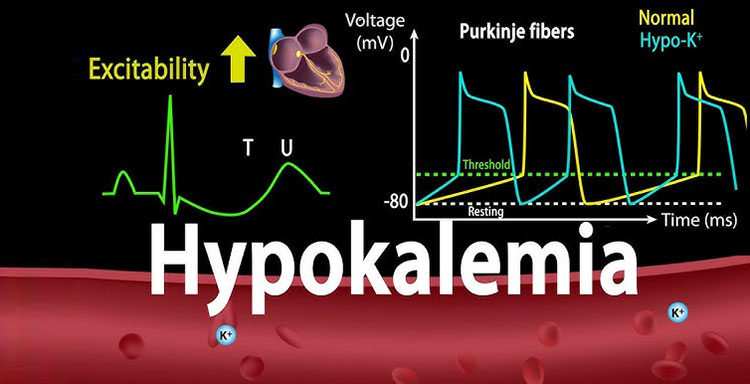
Hypokalemia
Do you know potassium chloride plays a vital role in your body? When the potassium level in the blood become so low (hypokalemia) then the body muscles and heartbeat become disrupt. The low potassium level is may be due to poor diet, fluid loss or various intake of some medications. But when you inject the potassium chloride into your body, it restores the potassium concentration and hence, muscles and heart functions becomes normal.
Potassium loss due to diuretics:
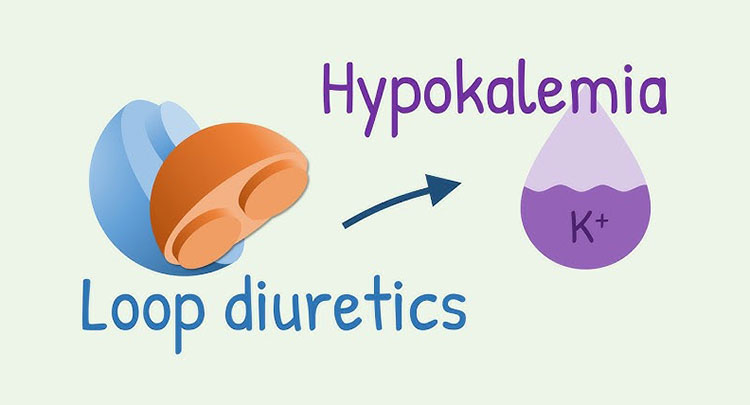
Potassium loss due to diuretics
If the patient is suffering from heart failure, heart diseases or kidney failure then usually diuretics are prescribes. These are the oral pills that increase the urine output. When urine becomes frequent, automatically the loss of potassium through the kidney increases and hence, loss of potassium from the body increases. By injecting the potassium chloride the potassium concentration becomes normal and suppress the deficiency of potassium in the bloodstream and in the body.
Severe vomiting or diarrhea:
Have you ever experienced the food poisoning or sever vomiting? In such condition, the loss of electrolyte from the body increases and hence, potassium is also lost. If oral intake of potassium is not possible for you, may be due to digestive problem or nausea, then you can inject the potassium chloride electrolyte into your body, the potassium level will become normal and you can enjoy your day.
During parenteral (IV) nutrition:
If you cannot eat normally and on total parenteral nutrition (TPN), then you needs to add potassium to your IV solution. It is usually added to those patients who have severe digestive problem, or premature infants. By potassium chloride injection administration, the potassium chloride ensures you the basic cellular and muscular functions.
Heart rhythm problems:

Heart rhythm problems
If you are heart patient or taking digoxin, then the low level of potassium can occur. The low level of potassium can leads to irregular or dangerously fast heart rhythm. But when you inject the potassium chloride into the body, the stability of electrical activity of the heart occur and hence, normalize the heartbeat.
4.Who should avoid using potassium chloride for injection?
Before injecting the potassium chloride electrolyte, think deeply, is your body needs the potassium? Because the body having already have too much potassium can’t tolerate the extra potassium. It should be used under strict medical supervision. These are as follows:
People having hyperkalemia:

People having hyperkalemia-Picture courtesy: healthline.com
Hyperkalemia refers to high potassium level. Hyperkalemia is occur if the potassium level is build up above the normal levels. This condition is commonly occur in patients having kidney failure occur, adrenal gland problems or those people who are taking the medications that increase the potassium level. In such condition, you should avoided the potassium chloride injection otherwise it can cause cardiac arrest and muscles weakness.
Patients with severe kidney disease:

Patients with severe kidney disease-Picture courtesy: kidneyfund.org
The bean shaped kidney can keep your body healthy by filtering out the excess potassium from your body. But if you are suffering from chronic kidney disease, then your kidney has lost its function of filtering the potassium and hence, buildup of the potassium in your body occurs. In such condition, if you inject the potassium chloride electrolyte into your body, the potassium concentration elevates which is warning to your health and can leads to life threatening hyperkalemia.
People with certain heart rhythm disorders:

Heart rhythm disorders-Picture courtesy: med.news.am
If you are patient having very slow heart beat or heart block then the injection of potassium chloride can makes you at risk. The potassium chloride injection can worsen the condition which might be leads to cardiac arrest or complete blockage. You should very carefully replace the potassium into your body if required.
5.How to administer the potassium chloride for injection into the body?

Administration of potassium chloride into the body-Picture courtesy: gtsimulators.com
Potassium chloride or you can say potassium salt is administered into the body when body experience low potassium level. This electrolyte or salt should be administered by the healthcare professional because if incorrectly injected, it can leads to some serious health issues. There are few points that should be keep in mind while administrating into the body.
- Never inject concentrated potassium chloride or potassium salt into the body.
- You should first dilute it in a suitable intravenous (IV) infusion.
- First check the patient potassium level, then the infusion rate and dose should be selected.
- The most common route of administration of potassium chloride is intravenous.
- You should be administered it by slow intravenous infusion.
6.What are the possible side effects of using potassium chloride for injection?
The lifesaving potassium chloride mineral can be turned into life threatening if given to the body that have already excess amount of potassium. You should inject it into the body with much care otherwise it can trigger some serious reactions if not used with care. Some side effects are as follows:
- Sometimes you may feel pain or burning at the injection site.
- You may experience the pain or swelling around the IV area.
- After injecting the potassium chloride electrolyte into your body, you may experience nausea or vomiting.
- If inject into the body having already high potassium, then it can leads to muscle weakness or cramps.
- You can experience numbness in hands and feet.
- After injecting the potassium chloride into high level potassium body, it can leads to irregular or slow heartbeat.
- The proper administration of potassium chloride is essential because of it leaks outside the vein then the risk of tissue damage is high.
- Sometimes, after the administration of potassium chloride into the bloodstream, you can experience chest discomfort or shortness of breath.
7.What is the composition of potassium chloride for injection?
Do you know that potassium chloride for injection is a clear, sterile and colorless solution which is designed for the patients having low potassium level? The solution does contain primarily potassium and chloride ion and does not contain anti-microbial agents, preservatives or buffers. The simple composition of potassium chloride for injection is given below:
| Components | Description |
| Active ingredient
Potassium chloride |
The potassium chloride is an essential potassium salt. It is responsible for restoring the potassium level in the body, if body is deficient in potassium. |
| Solvent
Sterile water |
The sterile water is used in the preparation of potassium chloride for injection. It is used for the dissolution of potassium salt and dilute the potassium chloride solution. |
| pH adjuster or stabilizer (optional)
Hydrochloric acid as pH adjuster |
In some samples, sodium hydroxide or hydrochloric acid is used to adjust the pH according to the physiological range. |
8.How to prepare the potassium chloride for injection?
The preparation of potassium chloride for injection needs a strict and high sterile environment in order to prevent the consequences. You should follow the following steps:
Verify the Prescription and Patient's Condition:
First you should review the doctor prescription, the dosage, route of administration and infusion rate. Also you have to check the patient blood serum, the level of potassium in the blood, and other health status of the patients. You should also confirm whether the patient needs peripheral vein administration or central vein infusion.
Gather Necessary Materials:
There are various materials that you should need. These are potassium chloride, cotton swab, sterile syringe and needle, gloves, sterile intravenous bag or sterile bottle, and intravenous fluids. The IV fluids can be 0.9% sodium chloride injection, 5% dextrose in water, or lactated ringer’s solution.
Wash hands and disinfect the tools:
You should wash the hands and wear the gloves. You should disinfect the rubber stopper of potassium chloride vial and syringe with a cotton swab dipped in alcohol.
Draw the required dose:
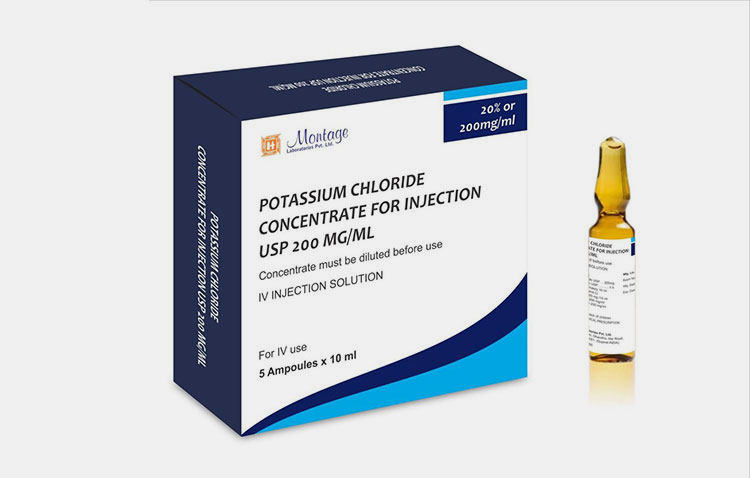
Potassium chloride-Picture courtesy: montagelabs.com
By using a sterile syringe, you should withdraw the prescribed amount of potassium chloride from the vial. For example, if your doctor has prescribed 20 mili- equivalent and you have a vial of 2 mili-equivalent then you should withdraw 10Ml solution from the vial or ampoule.
Dilute the Potassium Chloride in Compatible IV Fluid:
For peripheral vein administration:
If the patient needs low concentration of potassium chloride, then you should dilute the potassium salt. Let’s suppose, you should add 20 mili-equivalent dosage to at least 200 ml of intravenous fluid.
For central vein administration:
If the patient require high concentration of potassium chloride then you can use higher concentration i.e. 40 mili-equivalent per liter. But before injecting, you should carefully monitor the heart.
Mix thoroughly:
You should just add the potassium chloride into the intravenous fluid and let them to mix well. You should not shake vigorously to avoid foaming.
Labeling:
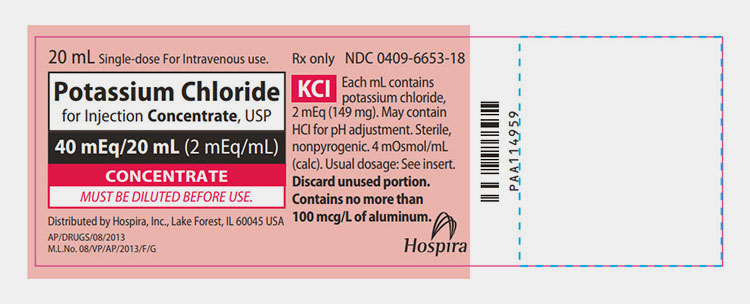
Labeling-Picture courtesy: dailymed.nlm.nih.gov
You should clearly label the solution with the ingredients, final potassium concentration, date and time of preparation.
Storage :
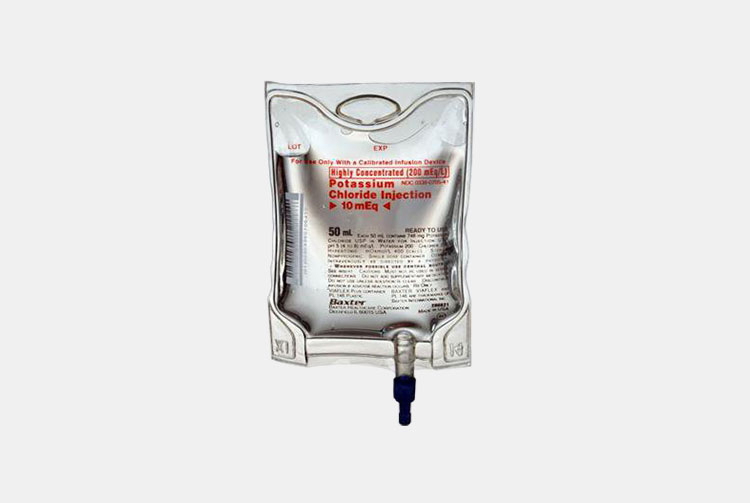
Potassium chloride IV solution
You should store the vials or plastic containers at room temperature which should be usually 15°C to 25°C. Do not let it freeze nor exposed to the high temperature.
9.Enlist the machines that are used in the preparation of potassium chloride for injection for large batch production?
The machines used for the preparation of large batch of potassium chloride solution for injections are as follows:
Stainless steel tank:
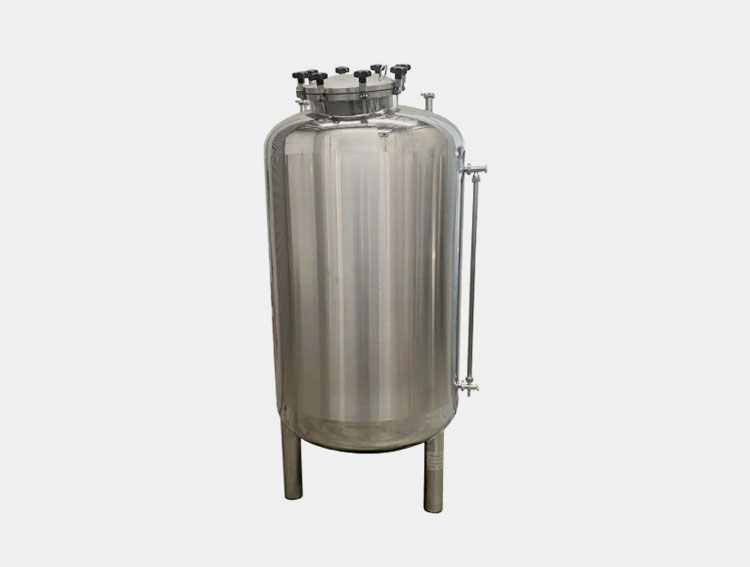
Stainless steel storage tank-Picture courtesy: homemakeit.com
The stainless steel tank is pharmaceutical grade and free from corrosion. This tank is used for the preparation of potassium chloride solution for the injection. You should add the potassium chloride powder into the sterile water in the stainless steel tank. This tank has agitator which prevents the sedimentation of potassium chloride powder and uniform mixing through the agitator is ensured.
Homogenizer vacuum emulsifying mixer:
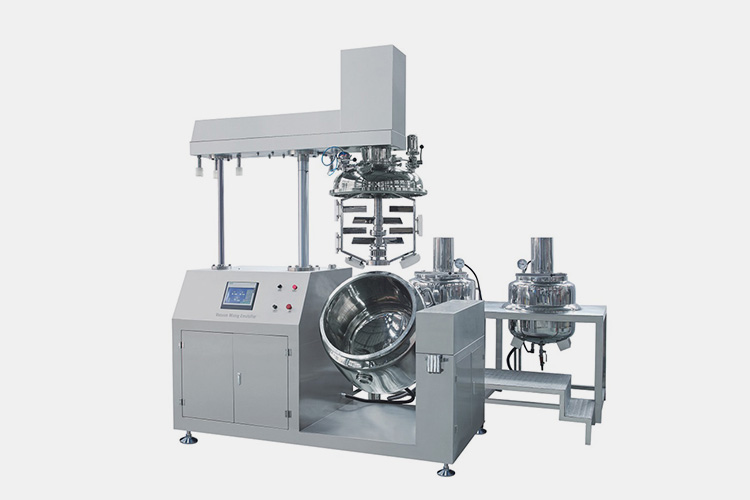
AIPAK homogenizer vacuum emulsifying mixer
The homogenizer is used to further breaking down the particles of potassium chloride in the water. The high shear mixer in homogenizer ensures the smooth and refined digestion of potassium chloride powder. In this machine, oxidation of the product is prevented. You will get a well dispersed potassium chloride solution in this machine.
Micron cartridge filter ( filtration system):
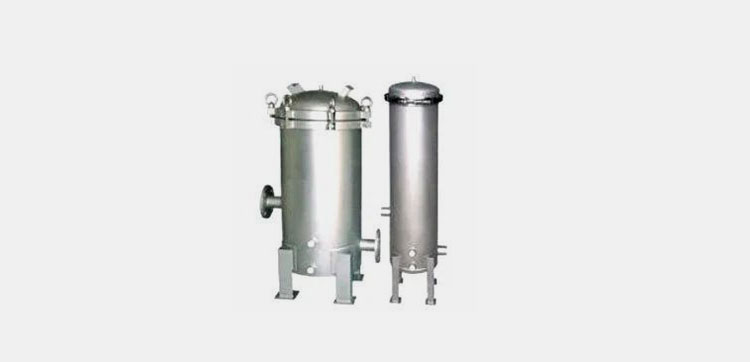
Micron cartridge filter
The potassium chloride solution may contain coarse particles. So, before filling you should pass this solution through a micron cartridge filter where all the coarse particles would be removed. It has micron filters so, very minute particles removal is also ensured. If bacteria or other particulates present, then all these should be filtered out by filters in the micron cartridge.
Holding and transfer tank:
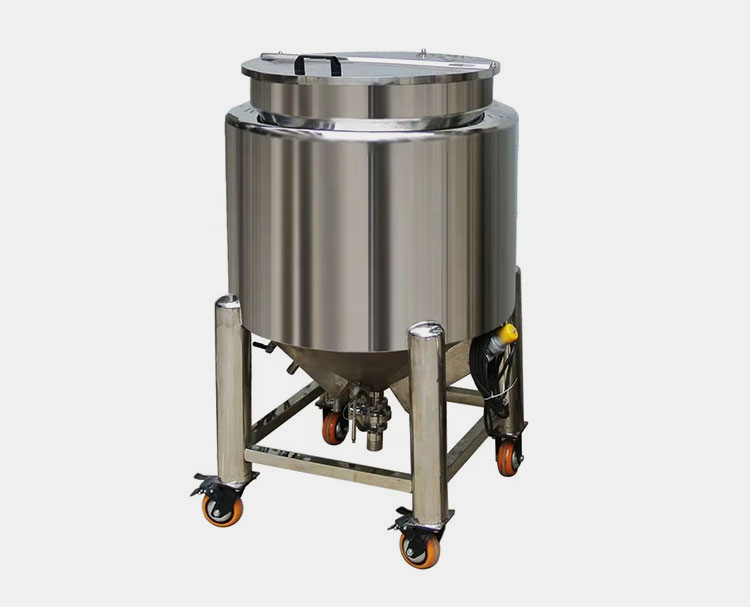
Holding and transfer tank
The sterile potassium chloride solution is then stored in a holding tank. This ensures the prevention of cross-contamination of potassium salt solution. It is integrated with sanitary transfer pump which transfer the potassium electrolyte solution from holding tank to the filling line. This prevent the contamination of the solution.
Filling of potassium chloride:
Vial filling production line:

Vial Filling Machine Production Line
Vial filling production line consists of vial washing machine, drying machine, high speed vial filling machine, capping and stoppering machine. All these machines are in one production line and GMP approved. The vials are washed, sterilized, dried, filled, capped and sealed. Each vial is precisely filled with potassium chloride solution with various dose.
Ampoule filling line:

Ampoule of potassium chloride
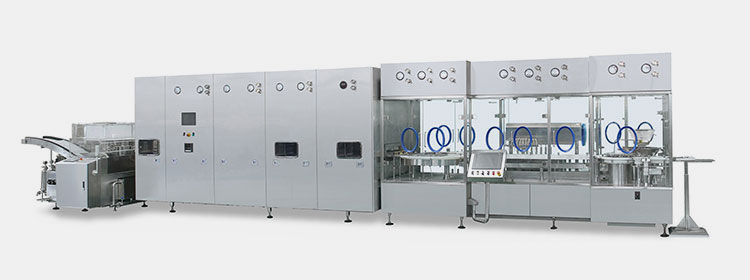
AIPAK ampoule filling line
The above ampoule filling line consists of ampule bottle cleaning, sterilization, dryer, filling and sealing. Each ampoule is sterilized and then filled with a precise amount of potassium chloride solution into the ampule. The filled ampoules are then preheated and sealed.
IV solution production line:
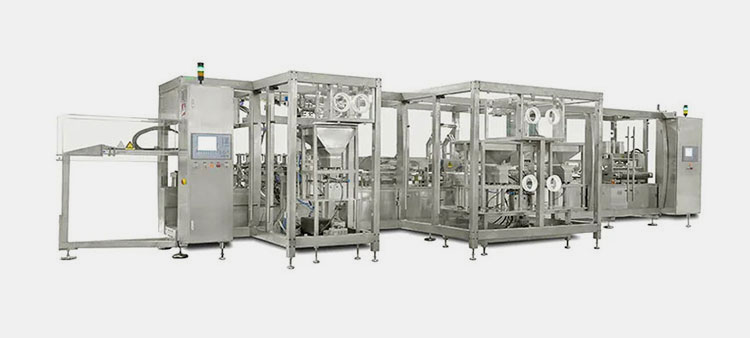
SRDS (Double Hard Port) series Non PVC soft bag IV solution production line
The double hard port IV solution production line is designed for the accurate insertion, seal and position double hard ports into the medical grade IV bags before filling and sealing stage. Two ports (one infusion and other medical ports) are inserted into preformed IV bag. After potassium chloride solution is filled into this bag. The filled IV bag ports are then sealed by using ultrasonic or thermal technology.
Sterilization
Pharmaceutical autoclave:

AIPAK ENGINEERING Pharmaceutical autoclave
All the filled vials, ampoules and IV bags are required for the sterilization and free from all the microbes and ensures product safety. The sterilization of potassium chloride solution is essential because it goes directly into the bloodstream. The moist heat or steam is required to trap the air and contamination. With the help of vacuum pulse or steam injection, the trapped air in the vials, ampoules and IV bags should be removed.
Labeling machine:

AIPAK labeling machine
The vials, IV solution bags and ampoules are then transferred to the labeling machine where each vial and ampoule is labeled with an essential information like concentration of potassium, route of administration etc. The label on the vials and ampoules guarantee the safety for the injecting of potassium electrolyte into the body.
Cartoning machine:
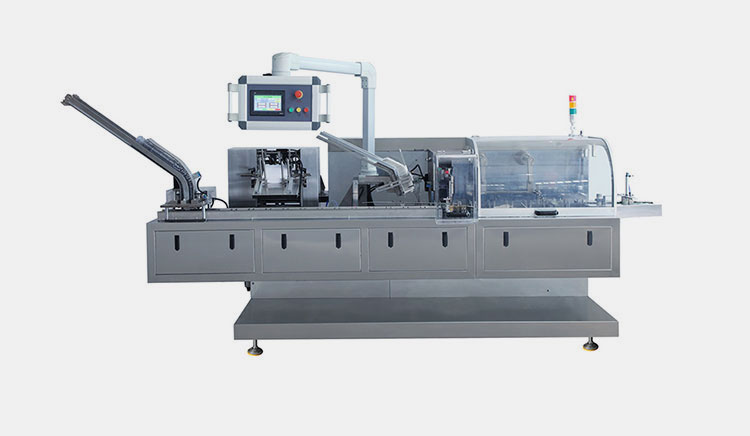
AIPAK cartoning machine
The filled and labeled vials, IV solution bags and ampoules are then transferred to the cartoning machine. In the cartoning machine, the flat cartons are fed to the conveyor where they are picked with the help of mechanical arms and turned into three dimensional box. The potassium chloride vials and ampoules are then put into the individual boxes or cartons. This ensures the safety of potassium chloride electrolyte during storage and transportation.
10.How is potassium chloride for injection stored?

Room temperature for storage of potassium chloride for injection
For the preservation and effectiveness of potassium chloride for injection, store the vials and polyvinyl chloride plastic bags at room temperature. The following are the storage conditions of potassium chloride for injection.
| Parameter | Requirement |
| Temperature | You should store the potassium chloride solution at room temperature usually 15°C to 25°C. If the temperature increases above 25°C then minor moisture content loss can occur. If exposed to high temperature, then more moisture content loss can occur. |
| Light protection | Protect the potassium chloride solution from light. Always keep the vials in the original cartons or amber containers. |
| Humidity | Do not store the potassium chloride product in humid place. Always keep it in dry place otherwise the packaging and labeling will get ruined. And you will not be able to carefully and confidently handle and inject the potassium chloride into the body. |
| Freezing | Do not freeze the vials or pre-mixed potassium chloride bags. The very low temperature creates participation and hence, spoiled the product. Or due to freezing, the storage material may get cracked and wastage of potassium chloride solution occur. |
| Post dilution storage | If the potassium chloride solution is diluted with IV fluids, then you should immediately use it. Or you can use it within 24 hours as per stability guidelines. |
| Expiry check | You should always check the expiration date before use. If it exceed, then you should disposed of as per local hazardous local protocol, otherwise you can use it. |
Conclusion:
In conclusion, in the fast-evolving world of healthcare, every drop of medication is engineered into a highly precise and sterile process that should be trusted. Potassium chloride for injection is a life saving product which is processed and carefully handled in machines from the weighing of potassium chloride powder to the packaging of its solution. This AIPAK ENGINEERING FAQ guide is designed for 2025, to support the healthcare professionals and manufacturers who trusts in technologies. By using different machines, you can manufacture and prepare the potassium chloride for injections for thousands of people who are really in need of it. I hope you enjoyed the guide. If you still have queries, feel free to ask!
Don't forget to share this post!
CONTACT US
Tell us your raw material and project budget to get quotations within 24 hours.
WhatsApp Us: +86 181 7101 8586
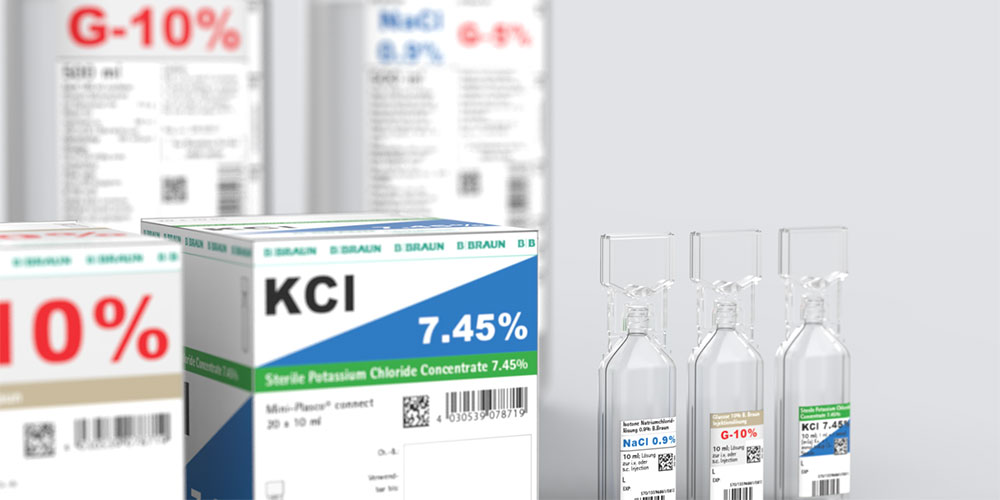 Tell us your material or budget, we'll reply you ASAP within 24 hours
Tell us your material or budget, we'll reply you ASAP within 24 hours

